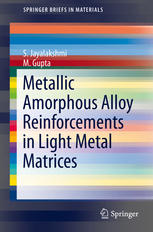

Most ebook files are in PDF format, so you can easily read them using various software such as Foxit Reader or directly on the Google Chrome browser.
Some ebook files are released by publishers in other formats such as .awz, .mobi, .epub, .fb2, etc. You may need to install specific software to read these formats on mobile/PC, such as Calibre.
Please read the tutorial at this link: https://ebookbell.com/faq
We offer FREE conversion to the popular formats you request; however, this may take some time. Therefore, right after payment, please email us, and we will try to provide the service as quickly as possible.
For some exceptional file formats or broken links (if any), please refrain from opening any disputes. Instead, email us first, and we will try to assist within a maximum of 6 hours.
EbookBell Team

0.0
0 reviewsThis book presents cutting-edge research on the design and development of novel, advanced high-strength, light-weight materials via the incorporation of novel reinforcements, namely, metallic amorphous alloys/bulk metallic glasses (BMG), in light metal matrix composites (LMMCs) based on Al and Mg. The book begins with an introduction to conventional ceramic reinforced light metal matrix composites, along with the major drawbacks which limit their application. Metallic amorphous alloys/Bulk Metallic Glasses (BMG) are new class of metallic materials that are distinctly differently from conventional metals/alloys in terms of their structure and thermal behavior, and exhibit extremely high strength (1 to 2 GPa) and large elastic strain limit (1 to 2%). Given these unique properties, upon their incorporation into Al/Mg-matrices, they provide superior interfacial properties, i.e. high degree of compatibility with the matrix due to their metallic nature when compared to conventional ceramic reinforcements, and thereby significantly enhance the mechanical performance of LMMCs. Amorphous/BMG reinforced LMMCs is an emerging research field and the existing literature is meager. This book discusses the various processing methods that would be suitable for these novel materials. A comparison of mechanical properties and strengthening mechanisms of amorphous/BMG reinforced composites with those of conventional ceramic composites is presented. Future research directions and wider research potential of the novel materials are discussed, and prospective applications are highlighted. For ease of understanding and comparison, appropriate schematics, tables, and figures are provided.